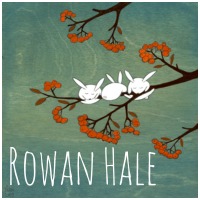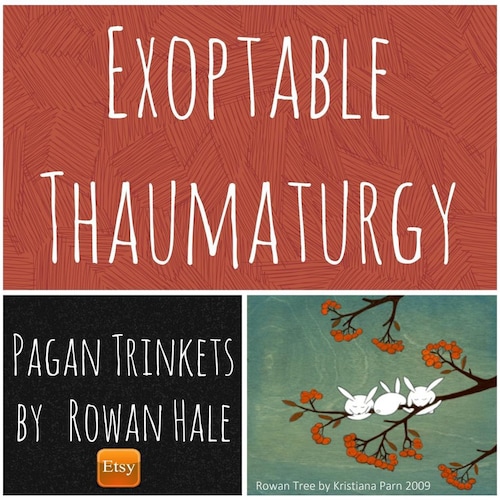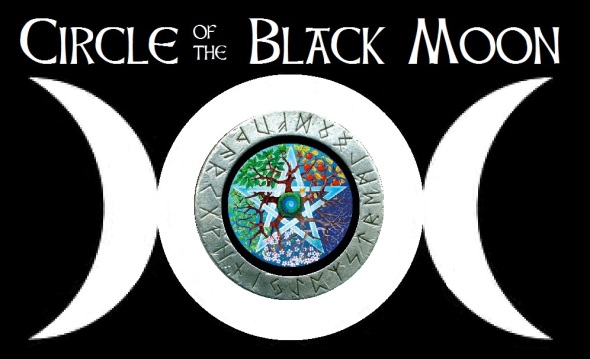Beyond Pagan 101
 Something I’ve noticed is that when you start browsing Pagan books, the great majority of them are ‘Pagan 101’ – what is is/means to be Pagan, how Pagans practice their faith, etc. I am a researcher by nature, and tend to be drawn to books on spirituality and on Pagan paths in particular. It’s been disappointing to see the same material rehashed over and over and over again: what Sabbats are, correspondences, dedication rituals and how to ‘be’ pagan – the very basics. Oh sure, it’s a little different; re-branded or spiffed up and published under a new name or path, but so much of it is the same basic, beginner material that you can find all over the place.
Something I’ve noticed is that when you start browsing Pagan books, the great majority of them are ‘Pagan 101’ – what is is/means to be Pagan, how Pagans practice their faith, etc. I am a researcher by nature, and tend to be drawn to books on spirituality and on Pagan paths in particular. It’s been disappointing to see the same material rehashed over and over and over again: what Sabbats are, correspondences, dedication rituals and how to ‘be’ pagan – the very basics. Oh sure, it’s a little different; re-branded or spiffed up and published under a new name or path, but so much of it is the same basic, beginner material that you can find all over the place.
I’ve been thinking about why that is; why so many books are ‘beginner’ style books for Pagan spirituality, and have come to several observations. First, I think that a lot of Pagan practice is ‘first generation’. People are dissatisfied with mainstream spirituality and they go exploring. Because there are so many different styles of Paganism, it’s hard to ‘pick one’, and so each style or path has its own interpretation of the Path. Additionally, there are different ‘branches’ of Paganism: Wiccan, Heathen, Asatru, Druidic, Dianic… the list goes on, each with their own specific way of doing things.
Secondly, as information and technology have increased access to information, the sheer volume of beginner Pagans has increased to the point that such a volume of beginner material is necessary. Since there are so many first generation Pagans, there isn’t a large population of people who have practiced long enough to move beyond basics. Although I know many who have been in practice for decades, a great many of those have switched paths or gone eclectic or solitary for lengths of time, and developed their own traditions, rituals and styles of practice and don’t feel the need to publish it publicly. Add to that the general consensus that Pagans don’t like to be told ‘what to do’ or ‘how to worship’, finding an open group to practice with can be extremely challenging, which leaves many/most new Pagans solitary.
Thirdly, of those who have practiced for extensive periods of time, they don’t feel the need to indoctrinate their children into their faith, allowing the children to find their own paths, as it were. Without that indoctrination, children who grow up Pagan may or may not feel the need to pursue their own spiritual path. I know several adults who were raised by Pagan parents and although they may be interested on the fringe, most tend not to practice actively, at least among the people I know in this situation. Obviously, that’s not true across the board, so no slight intended if you’re a third or fourth generation practicing Pagan. These are just my observations, and I’d be interested in hearing yours.
Though I understand these as logical explanations, and accept whatever other possible explanations there may be, they don’t mitigate the fact that the majority of Pagan-centered books available are beginner-level books. For those who have been practicing long enough to have personalized their faith and practice, investing in new books can be disappointing because even seemingly promising books end up containing only a little bit of new information. While I certainly do not claim any authority, I thought I would share some of the ways that I have found helped me to move beyond ‘Pagan 101’ and into a more deeply personal and meaningful practice.
One method I found to circumvent getting trapped in the newbie books has been to move outside of strictly Pagan-themed books and into history, philosophy and world religion books. (Side note: My path isn’t deity-centered, so if yours is, the same types of methods for researching and deepening your knowledge about your pantheon or deities applies.) Beyond a certain point, even the most devout reconstructionist Pagan practitioner is just making stuff up to fill in the gaps in whatever factual/historical recorded information they have managed to piece together. From that viewpoint, their opinion on how you should practice is no more authoritative than yours. Additionally, many strictly Pagan-themed books tend to be European in origin, which means that they may be making recommendations for alignments and correspondences for a different hemisphere, climate or botanical availability than where you;re practicing your path. I am a firm believer is adapting my practice to suit my environment and many nature or earth-based paths focus on that connectivity almost exclusively. It seems silly to try to find herbs or wood to work with that you wouldn’t have any personal connection with because you’ve never seen, touched or smelled it!
If your path is earth-based; hedge-witches, kitchen-witches, and the like, and herb-crafting is a big part of your practice, then you’ll only find a handful of information in your typical Pagan-themed herbal companions. Look into books on gardening – learn native flora and what grows best when. Growing your own herbs, flowers and plants can make them so much more effective when you need them to work and the connection that you have to your garden and materials is a big part of making your path come alive. Continue your education; learn about using plants as medicine, how to distill essential oils, and anything else that strikes your fancy from sources that aren’t strictly Pagan-oriented. If the only information you;re lacking is the magical correspondence, those are easy to find online. If food is your bag, then the same applies; research cooking and recipes; experiment with flavors and use herbs and ingredients that you grow yourself.
I’d also suggest researching folk magic – hoo-doo and root-work, Santeria, Native American religions and other types of old, earthy magic. Many of those types of religions can be hard to find information on, but it’s worth it when you do. If your ancestors come from those religions, then even more so. My personal task over the last year or so is considering how ancient holidays could be modernized. I have posts about Lupercalia and Matronalia, and will be doing similar posts this year. I may not get them ‘right’, but it’s been a fun experiment, and adds value to my practice.
Another way to find more meaning in your practice is just that – practice. If you are a new practitioner, especially if you’re coming out of a religion where Pagan things are taboo, then you may be reluctant to actually do the things that you’re reading about. Even if you’ve ‘been Pagan’ for a long time, but don’t practice, moving beyond the basics means getting your feet wet – sometimes literally (if ritual cleansing is part of your practice). If you haven’t found anything in what you’ve read that appeals to you, make something up! There’s no right or wrong way to do an Esbat or Sabbat Ritual; there’s no right of wrong way to perform a candle spell, or sage your house, or create an altar. Don’t be afraid to try something, whether it’s all written out for you or you make it up yourself. If it has meaning for you, then it works. I view my path as an ever-winding road, with new things to learn and try around every corner, and I’ve been practicing for twenty five years. Some things I’ve tried flopped entirely, some things worked for a time or were interesting to try out, but ultimately didn’t stick, while others have become a regular, essential part of my practice. our spiritual practice should add meaning and value to your life, even if it’s a simple ritual like lighting a candle and incense with your morning coffee.
My final tip for moving into a more mature practice is to connect with the Pagan Community. Not just online, but in person. If your local community hosts Pagan Pride Day, or has a ‘Pagans Night Out’ or other meet-up, make an effort to go. If you have children, look for (or organize!) a Pagan Playdate or Pagan Game Night. There’s a group in the Houston area of TX that hosts an Interfaith Tea & Game Night, and there are organizations like Celebration of Womanhood and Women Of Magic And Nature (WOMAN) that host retreats for Pagan women each year. Meeting the incredibly varied group of women at WOMAN for the last 2 years has been such a great way for me to learn and explore different paths and practice dynamics and has added to deepening the meaning and value in my own practice. Plus, it’s just plain nice to be around other people who have similar (even if very different) beliefs.
How have you moved beyond Pagan 101?
Brightest Blessings,

Affirmations Are Magic
 It’s been a while since I’ve posted, but with a new year comes new writing goals and so I am back at it again. Today, I want to write about a very simple tool; one that’s easy to use no matter what your background, training, path or other designation might be. This is magic that you can do anytime, anywhere; whether you’re locked away, comfortable in your broom closet or Pagan and Proud and shouting it from the rooftops. I’m talking about affirmations. Quite simply, they’re magic.
It’s been a while since I’ve posted, but with a new year comes new writing goals and so I am back at it again. Today, I want to write about a very simple tool; one that’s easy to use no matter what your background, training, path or other designation might be. This is magic that you can do anytime, anywhere; whether you’re locked away, comfortable in your broom closet or Pagan and Proud and shouting it from the rooftops. I’m talking about affirmations. Quite simply, they’re magic.
Before we venture into this topic, I want to clarify what affirmations are, and what they’re not. When I was looking for an image to go with this post, and I came across quite a few graphics that were examples of affirmations (or were supposed to be). While many were actual affirmations, many were ‘encouragement’ or ‘praise’ rather than true ‘affirmations’, so I wanted to take a moment to explain the difference. When we talk about affirmations, there’s a difference in the way they’re worded. These are not trite words of praise that can be uttered or offered and discarded. They’re not rote pats on the back, a la Stuart Smalley, wherein you try to make yourself feel better. No; true affirmations are more than just words; they’re statements of intent. They’re the same thing that magic spells and prayers are made of; they’re action phrases.
Some affirmations are a declaration to the world (or to only yourself, as the case may be) of your will made manifest; a statement of WILL come. It’s a promise that you are going to put actions to those words and bring that statement into reality. Other types of affirmations serve a different purpose. They are reminders to your most inner self about who you are in your core; about where you came from, and about what your future holds. Statements like ‘I am Love, personified’; “I am filled with Divine Light and Purpose’; and ‘I am a vessel of The Goddess – See Me Shine’ reconnect the world-weary self with the essence of what we are when the conscious part of our minds forget what the unconscious knows, inherently. These types of affirmations are a powerful tool that can literally re-write your internal monologue, especially if you struggle with negative thoughts, which many people struggle to overcome.
I’ve been using a variety of tools to manage my mental health, and affirmations are part of my routine. I tend to prefer to make my own tools; the act of creation, and the final product invested with my time, energy and intention always seems to work better for me as it’s already attuned to the purpose for which it was created. I spent some time a couple of years ago creating a deck of affirmation cards for myself. I just used index cards, colored, stamped and glittered (because I like shiny things) with the actual statements printed off and glued onto the decorated cards. They’re nothing fancy; I keep them in a plastic box I bought at the dollar store, but they’re uniquely mine and meaningful to me, which is really all that matters.
Affirmations are not just positive thinking. Anyone can think good thoughts. The word ‘affirm’ means ‘to state as a fact; assert strongly and publicly’. It’s not just a sentence that you read from a card; affirmations are things that you feel. They’re statements and truths that you know, to the deepest part of yourself. They’re echoes of past lives and loves and experiences; they’re the things that you forget when you’re running around trying to take care of all of the various responsibilities and obligations in your life. Affirmations can bring you back to center, and keep you grounded and focused on the direction that you want to move forward in.
Affirmations are powerful magic; don’t let anyone tell you otherwise. ;)
Brightest Blessings,

Air in the North, Part II
 I really miss the alphabetical challenge that the Pagan Blog Project was doing – though I understand why they stopped, it was a fun challenge, and even though I don’t think I completed one of them ‘on time’, it did keep me writing. So I thought I’d do a modified version of it just for myself, with a more-or-less weekly alphabetical update.
I really miss the alphabetical challenge that the Pagan Blog Project was doing – though I understand why they stopped, it was a fun challenge, and even though I don’t think I completed one of them ‘on time’, it did keep me writing. So I thought I’d do a modified version of it just for myself, with a more-or-less weekly alphabetical update.
I also found another site with monthly blog prompts, at Mom’s a Witch. I’ll probably work some of those in over the course of this coming year as well.
Starting with ‘A’, this week’s post is on Air in the North, Part II. A while back, for one of the other PBP posts, I did the original Air in the North post, but I’ve learned more since then and thought it was worth another post. I also met another few people who put Air in the North, which was really cool, since most of the people I practice with on a regular basis keep to traditional elemental directions.
At Pagan by Design, the article starts off with acknowledging the discrepancy and sometimes conflict among different Pagan paths regarding elemental and directional correspondences. There are a lovely few paragraphs that indicate other Pagan cultures and paths that use additional directional and elemental correspondences (of note, Chinese, with fire, wood, metal, earth and water). I particularly like the Celtic and Gaelic preference of North, East, South, West, Above, Below, Within; and the concept of the Spirit being divided into 3 – Light, Dark, and Soul. I’ve written Druidic-inspired Rituals, using only three correspondences: Land Sea & Sky; and have participated in Native American-inspired Rituals where we did a Medicine Wheel rather than a traditional Quarter Call.
Part of my preference for Air in the North comes from thinking along these lines:
Native American:
The North improves mental wisdom, discovery, and logic in an illuminating fashion. Knowledge accumulated through our lives is purified, as if a swift breeze blew away all dust and confusion. We prepare for intellectual illumination as these winds sweep into our awareness. It seems that gusts of enlightened, intellectual processes of “knowing” blows into our lives.
I was also particularly intrigued to find that the Lakota People also associate North and Air. I am not Lakota, but I’ve learned a bit about them over the past few years as one of my good friends is of Lakota heritage, and identifies with some of the spiritual paths and practices of the People. That makes total sense to me, as the Dakotas would be among the first territories to feel the chill of the Northern Winter storms – Air would absolutely make sense coming from the North for them, which is a big part of my feeling that Air belongs in the North for me as well.

After a lengthy explanation of why traditional correspondences exists and speculation as to how they came about, Pagan’s Path ends with this:
For you, the wind might be warm instead of cold. The waters might be cool instead of warm. What do you “feel” when you think of each element? Does the fire rise or flicker? Does the Earth rise or spread out upon a vast land? Make your own saying and then think about where these elements fit within the cardinal directions of your location. Is it cold in the North or the South? Does the warm water flow to the South or East? Does the sun represent your fire? If so, when it rises in the East or sets in the West? Does the Earth rise up to greet you in the mountains of the East, West, or maybe some other direction? These are the things that make you connected to the elements, the directions and the Divine Energy around you. It’s not how your friend feels, or your partner thinks, or what your Teacher says is right or wrong. None of those outside forces are going to be there when YOU sit down to do a working or to commune with the Divine world around you. So this is your time to think about where you are, and what you believe. You have the answers within yourself. Just sit down, meditate a little and ask your higher self what goes where and why.
That, I think, is one of the key elements as to how ‘being Pagan’ works. “You have the answers within yourself. Just sit down, meditate a little and ask your higher self what goes where and why.” This, exactly.
Though I am pretty vocal about my preferences, I don’t have to have Air in the North to be part of a Ritual Circle. I have, and do, function just fine when someone whose correspondences differ from mine leads Ritual. In fact, I’d go a step further and say that my practice is enriched by being part of Circles where things are vastly different form how I normally do them. Being exposed to new things always adds an element of wonder to my experience within that Circle, and I have always come away from that experience with something to take back to my practice (or know with certainty that something is ‘not for me’).
If you keep non-traditional correspondences, I’d love to hear form you – what they are and why you have them!
Brightest Blessings,

















